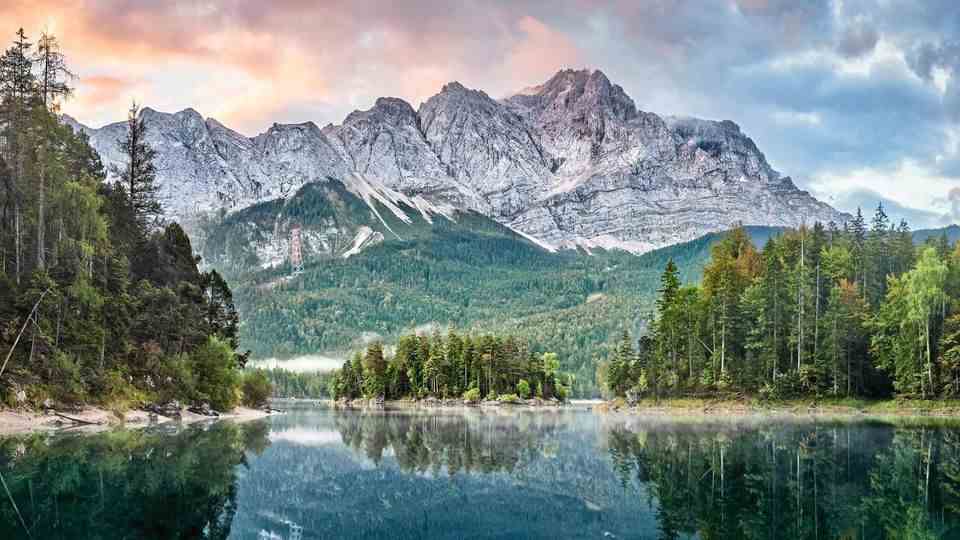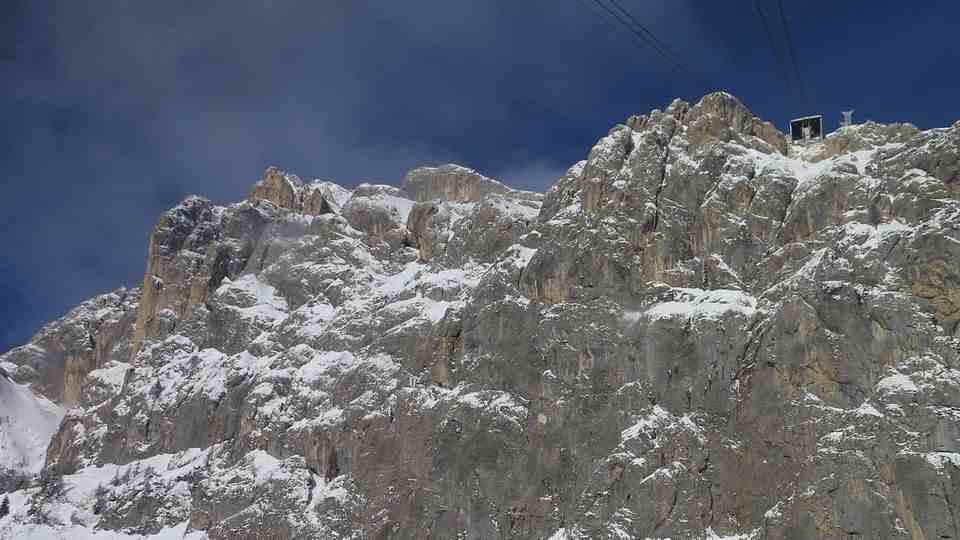Accident in the Dolomites
Fatal glacial collapse on the Marmolada – what role does climate change play?
The edge of the Marmolada glacier in the Dolomites. From here, the masses of ice and rock made their deadly way down into the valley
© Corpo Nazionale Soccorso Alpino e Speleologico / DPA
On the day after the momentous glacier collapse in the Dolomites, the search for the missing continues. It is now certain that Germans are also among the injured victims. Experts get to the bottom of the cause.
In the glacier fall in the northern Italian Dolomites, two Germans are likely to be among the mountaineers affected. The Federal Foreign Office assumes this, as a spokeswoman for the German Press Agency said on Monday in Berlin. According to initial information, the two were injured. The honorary consul in Bolzano and the German embassy in Rome are in constant contact with the Italian authorities, it said.
The health authorities in Belluno, south-east of the scene of the accident, have now announced that two Germans rescued on the mountain are being treated in a clinic. It was a 67-year-old man and a 58-year-old woman. Both would be closely monitored. It helped that the clinic staff spoke German and were able to establish contact with the family.
Meanwhile, on Monday, search and rescue operations continued on the more than 3,340-meter-high Marmolada mountain — the highest in the Dolomites on the border of the Trentino-Alto Adige and Veneto regions. Helicopters and drones searched the area where an avalanche of snow, ice and debris swept away several mountaineers on Sunday. As the police in Trento confirmed in the afternoon, the rescue workers discovered another body. This increases the death toll to seven and eight people were injured. Another 14 climbers are still missing.
Glacial rupture near the ascent route to the summit
The Marmolada Glacier is the largest glacier in the Dolomites and is located on the north side of the Marmolada Group, which lies in the provinces of Trento and Belluno. The ice sheet broke near Punta Rocca on the ascent route to the summit. Footage taken from a nearby mountain hut shows masses of snow mixed with boulders rushing down into the valley with a deafening noise.
For the former extreme mountaineer Reinhold Messner, the reasons for the deadly glacier fall are clear: climate change and global warming. “These eat away at the glaciers,” says the 77-year-old. Due to the unusually warm temperatures during these times, the glaciers throughout the Alps are becoming increasingly unstable. Real ice towers – called seracs – “which can be as big as skyscrapers or rows of houses” would then form precisely on the edges of the cliff, says Messner.
Messner’s assessment is confirmed by the IPCC. In its report on climate change published in March, it ranks melting glaciers and snow as one of the ten most serious threats posed by global warming. By the end of the century, the glaciers in Scandinavia, Central Europe and the Caucasus could lose between 60 and 80 percent in mass.
Glaciers experience bad summer
Whether in Italy, Switzerland or Austria: the glaciers are currently experiencing a bad summer. It’s thawing everywhere, the zero-degree limit has been above 4,000 meters for weeks. Sometimes there is not even enough frost at night. The glaciologist Andrea Fischer from the Austrian Academy of Sciences speaks in the ORF of a “historically unprecedented situation”. Fischer: “At the end of the summer, the glaciers will probably look significantly different than before.
Fischer and her colleagues blame three factors in particular for the sharp decline: an extremely snowless winter, several episodes of Sahara dust and the abrupt rise in temperature in May and June. What this has led to can also be observed on the Zugspitze, at almost 3000 meters the highest mountain in Germany. There has been no solid snow cover there for two weeks. “Never before in the last 75 years,” says Gudrun Mühlbacher from the German Weather Service. Normally there is still up to three meters of snow on the Zugspitze in June.
Swiss glaciologist Mattias Huss and his team from ETH Zurich have calculated that the heat cost Swiss glaciers 300 million tons of ice and snow in the week of June 15-21 alone. That could have filled an Olympic-size swimming pool every five seconds.
In the worst case, the consequences of this dramatic decline can manifest themselves as they are now on the Marmolada. For thousands of years, the massive masses of ice have stabilized the rocks and mountains. If the glaciers melt too quickly, as seems to be the case everywhere at the moment, entire mountain formations will be destabilized. The consequences: rockfalls and glacial collapse.
No slowdown in sight
The bad thing is that there is no sign of the process slowing down. Many glaciers can probably no longer be saved. Eperte Huss: “Glaciers are too big for the current climate. If all climate-warming effects disappear in one fell swoop and the global temperature does not rise, there would still be a decline over several decades.”
Sources: DPA, AFP, watson, ORF




